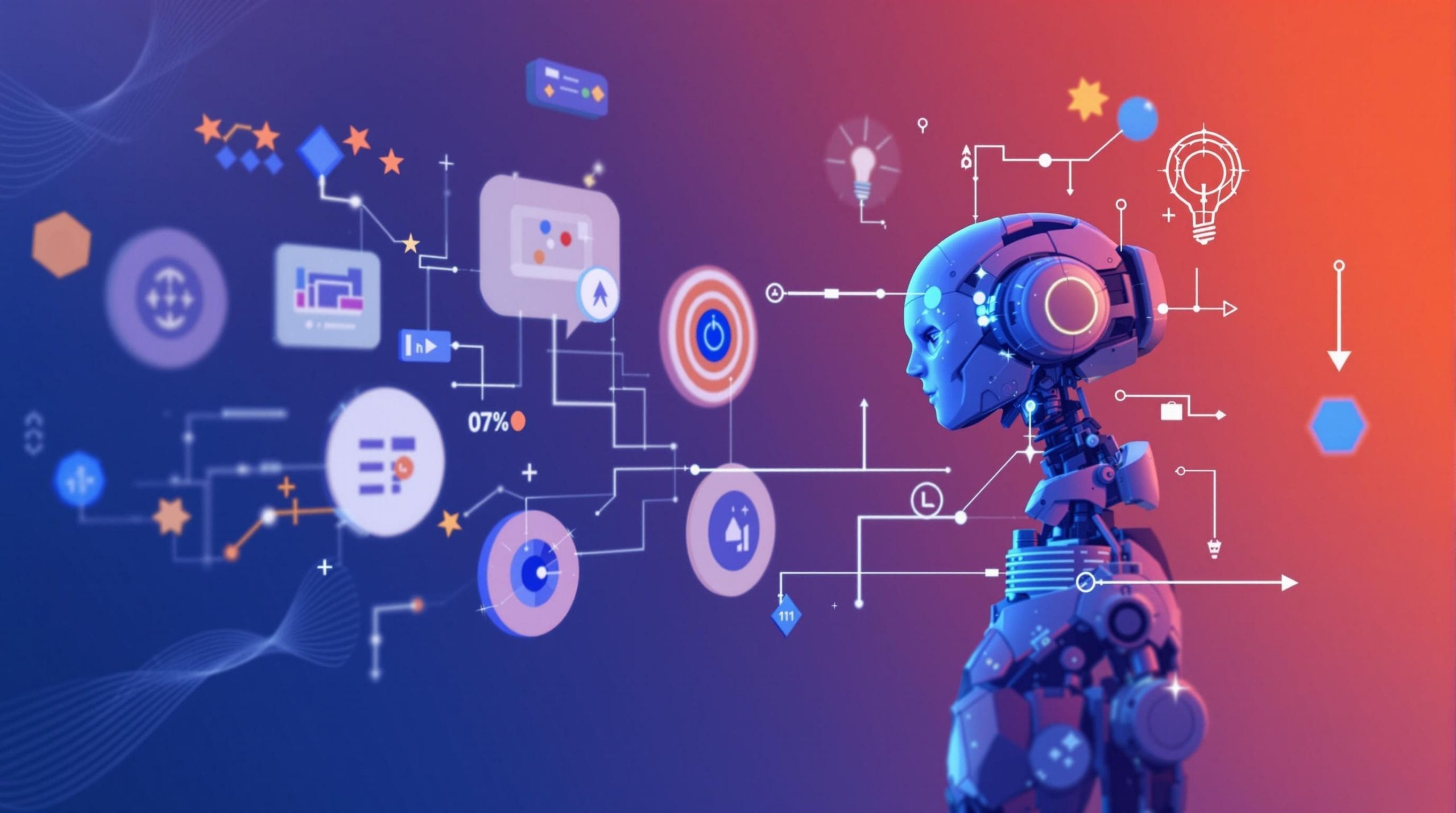Online Learning Academy Pros & Cons
ConsThe global e-learning market is projected to reach $930.3 billion by 2033, underlining why an online learning academy has become a cornerstone for skill development and career growth. (avnetwork.com) This guide equips you with a clear understanding of what academy learning entails, how it works, and why it outperforms traditional alternatives. You will explore core features of modern platforms, the benefits they deliver—from flexibility and personalized pathways to cost-effectiveness—and the spectrum of programs available, from K-12 curricula to professional certifications. Finally, you’ll learn how to select the right academy, get started seamlessly, and address common concerns without drowning in jargon.
The global e-learning market is experiencing significant growth, with projections indicating substantial expansion in the coming years. This growth is driven by increasing adoption of online learning platforms and the demand for accessible education and skill development.
This research supports the article’s introduction by providing context to the growth of the e-learning market.
What Is an Online Learning Academy and How Does Academy Learning Work?
An online learning academy is a digital institution delivering structured courses and degree pathways via a learning management system, enabling self-paced study, interactive tutorials, and real-time assessments that boost skill acquisition. By hosting video lectures, quizzes, peer forums, and AI-driven progress tracking, these platforms streamline learning delivery and improve knowledge retention through adaptive reinforcement. Understanding these mechanisms sets the stage for examining platform features that make academy learning both accessible and impactful.
What Are the Key Features of Academy Learning Platforms?
The success of academy learning hinges on several integrated capabilities that propel engagement and outcomes.
Feature breakdown reveals how each element functions and the advantages it brings:
Each feature converges to create a seamless learning environment, preparing us to explore how personalization elevates academy learning further.
How Do Personalized Learning Paths Enhance Academy Learning?

Personalized learning paths tailor curriculum sequences based on individual progress metrics and career goals, accelerating mastery by focusing on relevant modules first. By analyzing quiz scores and interaction patterns, the system dynamically adjusts content difficulty and suggests specialized electives. This adaptive approach not only keeps learners motivated but also ensures efficient use of study time and sharper alignment with professional aspirations.
What Types of Programs Are Offered by Online Learning Academies?
Online learning academies host a diverse catalog of offerings designed for different life stages and goals:
- Professional Development Courses – Short courses on leadership, project management, and digital skills that award industry-recognized certificates.
- Skill-Based Certifications – Modular programs focusing on specific competencies such as data analysis or UX design, often endorsed by employers.
- K-12 Curriculum – Accredited virtual schooling aligned with state standards, offering interactive lessons in math, science, and languages.
- Higher Education Degrees – Fully online bachelor’s and master’s programs in disciplines ranging from computer science to business administration.
- Lifelong Learning Workshops – Micro-credential bootcamps and webinars for reskilling and upskilling throughout one’s career.
These program varieties illustrate how academy learning adapts to learners from schoolchildren to seasoned professionals, paving the way to examine career outcomes next.
How Does Academy Learning Support Career Advancement?
Academy learning bridges education and employment by mapping courses to in-demand job roles and verifying competencies through digital badges. Many platforms partner with industry stakeholders to align syllabi with workforce standards, ensuring that learners acquire skills directly transferable to their field. Case in point: data science tracks incorporate hands-on projects mirroring real-world challenges, enabling graduates to showcase portfolio pieces and negotiate higher salaries.
What Are the Benefits of Learning at an Online Academy?
Online learning academies deliver multiple advantages over classroom-only models, combining flexibility, personalization, interactive engagement, and cost savings into a cohesive educational ecosystem. By decentralizing instruction, these academies empower learners to control pace and place, while interactive modules reinforce understanding and reduce dropout rates. The resulting synergy enhances retention, accelerates skill acquisition, and maximizes return on educational investment.
How Does Flexibility and Accessibility Improve Learning Outcomes?
Flexibility removes barriers related to geography and scheduling, allowing learners to access courses at any hour and from any device. This autonomy supports:
- Self-paced progression that adapts to individual work or family commitments.
- Access to global expert instructors without relocation.
- On-demand review of challenging topics, fostering deeper comprehension.
Such adaptability directly correlates with higher completion rates and sustained motivation as learners integrate study into their real-world routines.
Why Is Personalized Learning Important in Academy Learning?
Adaptive learning engines customize content delivery by leveraging real-time performance data. Through continuous assessment and microlearning interventions, academies can:
- Emphasize remediation on weak areas before progressing.
- Recommend supplementary resources aligned to career objectives.
- Adjust lesson complexity to maintain optimal cognitive load.
Personalization not only sharpens focus on critical skills but also enhances learner confidence and drives measurable progress toward certification.
How Does Interactive Content Boost Knowledge Retention?

Interactive elements—such as scenario-based simulations, gamified quizzes, and virtual labs—engage multiple senses and reinforce neural pathways. By actively involving learners in problem solving, these tools:
- Stimulate critical thinking through real-life applications.
- Provide instant feedback that corrects misconceptions.
- Increase motivation via achievement badges and leaderboards.
This engagement loop solidifies knowledge far beyond passive video lectures.
What Cost Advantages Do Online Learning Academies Offer?
Online academies often reduce overhead by eliminating physical classrooms, translating to:
- Lower tuition fees compared to campus-based programs.
- Elimination of commuting or relocation expenses.
- Pay-as-you-go models for individual course access.
These savings democratize education, making advanced credentials attainable for a broader audience.
Which Types of Online Learning Programs Are Available in Academy Learning?
Academy learning extends across formal education, vocational training, and lifelong enrichment, each category aligned to specific learner needs and outcomes. By structuring offerings into clear program types, academies ensure targeted credentialing and meaningful skill development.
What Are Professional Development Courses and Their Benefits?
Professional development tracks provide short-form modules on business, technology, and leadership skills. Participants gain:
- Industry-recognized certifications that bolster resumes.
- Practical frameworks and templates for immediate workplace application.
- Networking opportunities through cohort-based projects.
These courses often include live webinars and mentor feedback to reinforce real-time competency growth.
How Do Skill-Based Certifications Work in Online Academies?
Skill-based certifications distill complex subjects into bite-sized modules, each culminating in a competency assessment. The pathway typically involves:
- Foundational theory lessons with interactive readings.
- Hands-on exercises or case studies replicating professional scenarios.
- Final evaluation—project submission or proctored exam—validating proficiency.
Upon completion, learners receive digital badges that map to defined skill taxonomies recognizable by employers.
What Options Exist for K-12 and Higher Education Online?
With state-approved curricula and credit-transfer agreements, these programs deliver formal education entirely in a digital environment.
How Does Lifelong Learning Fit into Academy Learning?
Lifelong learning modules facilitate continuous professional growth through:
- Short workshops on emerging technologies.
- Micro-credentials in niche subjects like blockchain or UX research.
- Subscription-based access to evolving course catalogs.
This ecosystem ensures that skills remain current and careers stay future-proof.
What Are the Key Features of a Modern Online Learning Academy?
Contemporary academies integrate cutting-edge technologies and pedagogical innovations to deliver immersive, outcome-driven experiences. From AI personalization to accredited pathways, these features establish academies as leaders in digital education.
How Does AI-Powered Learning Personalize Education?
Artificial intelligence engines analyze learner interactions to:
- Predict skill gaps and recommend targeted content.
- Adapt lesson difficulty to suit individual pace.
- Automate feedback on assignments using natural language processing.
Such dynamic adjustments maintain engagement and ensure each learner follows an optimized path.
What Role Do Community and Mentorship Programs Play?
Peer forums, live study groups, and one-on-one mentorship foster social learning, accountability, and professional networking. By connecting learners with experts and cohorts, academies enhance:
- Collaborative problem solving.
- Industry insights through mentor office hours.
- Motivation via shared goals and social recognition.
This human layer amplifies the effectiveness of digital instruction.
How Are Interactive and Immersive Technologies Used?
Immersive content transports learners into simulated environments, making abstract concepts tangible and memorable.
Why Is Accreditation Important for Online Learning Academies?
Accreditation ensures quality standards by verifying curriculum rigor, faculty credentials, and assessment integrity. Accredited status:
- Confirms recognition by employers and academic institutions.
- Guarantees credit transferability across programs.
- Signals trust and reliability, bolstering learner confidence.
This quality assurance underpins the academy’s reputation and the real-world value of its credentials.
How Do You Choose the Right Online Learning Academy?
Selecting an academy involves evaluating curriculum relevance, instructional quality, and support infrastructure. By considering key factors and evidence of outcomes, you can align your investment with personal and professional objectives.
What Factors Should You Consider When Selecting an Academy?
When comparing providers, assess:
- Curriculum Alignment – Coverage of up-to-date skills and industry standards.
- Instructor Expertise – Credentials and real-world experience of educators.
- Support Services – Availability of tutoring, technical help, and career counseling.
- Accreditation Status – Recognition by accrediting bodies and employers.
- Platform Usability – Ease of navigation, mobile access, and content formats.
Focusing on these dimensions ensures a balanced decision grounded in quality and relevance.
How Do Reviews and Testimonials Influence Your Choice?
Peer-generated feedback provides insights into course rigor, instructor engagement, and outcome satisfaction. Honest testimonials reveal:
- Realistic expectations about workload and time commitment.
- Tangible career impacts and salary changes.
- Community responsiveness and platform issues.
Such firsthand accounts guide prospective learners toward academies that consistently deliver value.
What Are the Differences Between Free and Paid Courses?
Understanding cost-benefit dynamics helps match budget constraints with educational goals, optimizing ROI.
How Can You Evaluate Career Outcomes and ROI?
Measure return on investment by tracking:
- Job placement rates reported by alumni.
- Salary increases associated with specific certifications.
- Time to completion versus career advancement milestones.
Quantifiable career metrics provide a clear picture of an academy’s real-world effectiveness.
How Can You Get Started with Academy Learning Online?
Embarking on academy learning involves simple registration, course exploration, and progress tracking within a supportive environment. A clear initiation process ensures you move swiftly from enrollment to skill mastery.
What Are the Steps to Enroll in an Online Learning Academy?
- Create an Account – Submit basic information and verify your email.
- Select a Program – Browse categories or use search filters to find relevant courses.
- Complete Registration – Provide payment details or apply for financial assistance.
- Attend Orientation – Review platform tutorials and connect with mentors.
How Do You Explore and Select Courses?
Use course catalogs that allow filtering by subject, duration, difficulty, and accreditation. Pay attention to syllabi, prerequisites, and learner reviews to ensure alignment with your skill objectives. This targeted selection process maximizes relevance and engagement.
What Support Services Are Available for Online Learners?
Most academies offer:
- Technical Helpdesks for platform troubleshooting.
- Academic Mentorship for curriculum guidance.
- Career Counseling for job search strategies.
- Peer Study Groups for collaborative learning.
These resources enhance satisfaction and reduce attrition by addressing challenges promptly.
How Can You Track Your Progress and Achievements?
Built-in dashboards display course completion percentages, quiz scores, and earned badges. Automated progress reports and calendar reminders help you stay on track, while transcript exports enable seamless sharing of credentials with employers.
What Are Common Questions About Academy Learning?
Below are clear explanations addressing critical distinctions, effectiveness metrics, and emerging trends in online academy education.
What Is the Difference Between an Online Learning Academy and Traditional Education?
An online learning academy delivers curriculum through digital platforms, offering self-paced modules, virtual interactions, and adaptive assessments, whereas traditional education relies on in-person lectures, fixed schedules, and campus facilities. This digital model provides greater flexibility and access, enabling learners to balance studies with professional and personal commitments seamlessly.
How Effective Is Online Learning for Professional Development?
Online learning achieves comparable—or often superior—knowledge retention rates by integrating interactive content and spaced-repetition techniques. Studies indicate that digital courses can lead to 25–60 percent higher retention than face-to-face instruction.
This effectiveness, combined with targeted skill assessments, makes online academies a potent tool for career advancement.
What Are the Best Online Learning Platforms for Academy Learning?
Top-performing platforms share key attributes: robust AI personalization, accredited certifications, immersive multimedia, and strong community support. Providers that integrate real-world projects, mentor engagement, and industry partnerships consistently yield higher completion and placement rates.
How Does AI Improve Personalized Learning Experiences?
AI algorithms analyze user data—such as quiz responses, time on tasks, and forum interactions—to adjust content difficulty and recommend supplementary resources. By continuously refining curriculum pathways, AI ensures learners focus on areas requiring improvement, promoting efficient mastery and sustained motivation.
Can Online Learning Academies Help Future-Proof Your Career?
Yes, by offering continuous opportunities for reskilling and upskilling in emerging fields—such as data science, cybersecurity, and digital marketing—online academies empower professionals to adapt to evolving market demands. Lifelong learning modules and micro-credentials provide a steady stream of new competencies, safeguarding employability in a rapidly changing economy.
Continuous advancements in technology and pedagogy make academy learning a dynamic, future-oriented solution for individuals and organizations alike. By understanding platform features, program types, and selection criteria, you can confidently integrate online learning into your skill development strategy. Embark on your academy learning journey today to unlock new opportunities, accelerate career growth, and stay ahead in an ever-competitive landscape.
news via inbox
Get our best unfiltered stories and boldest ideas delivered straight to your inbox.












